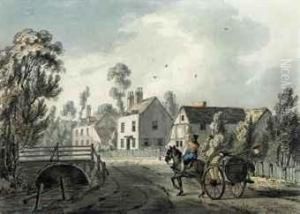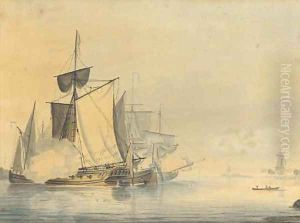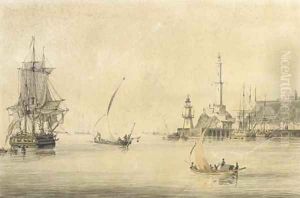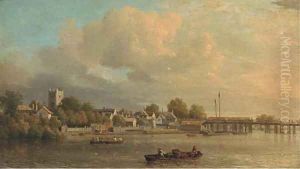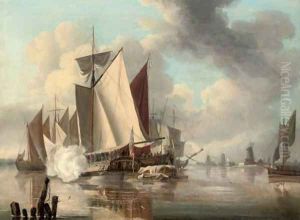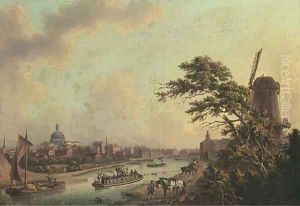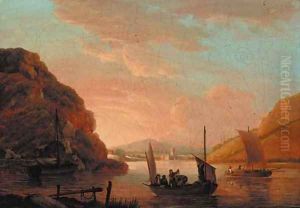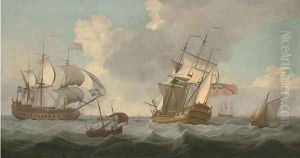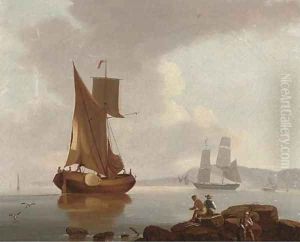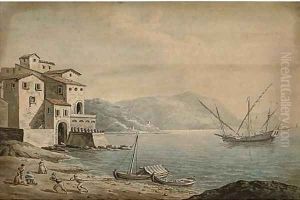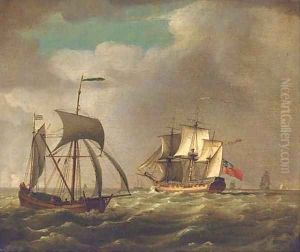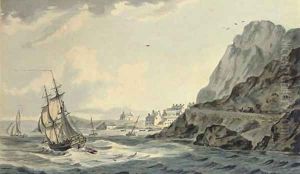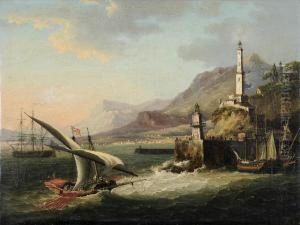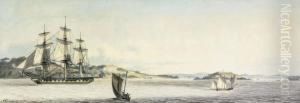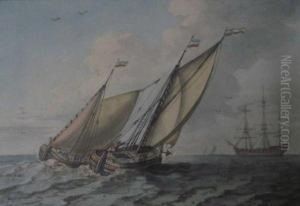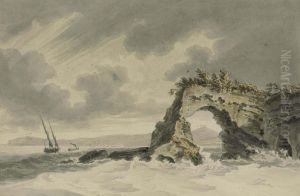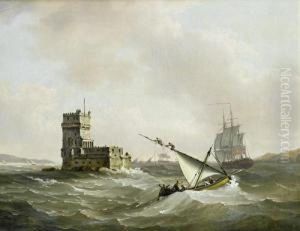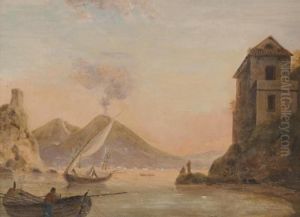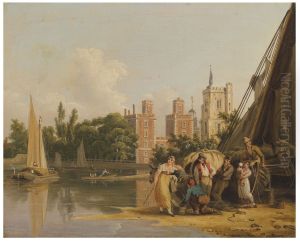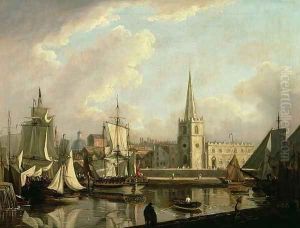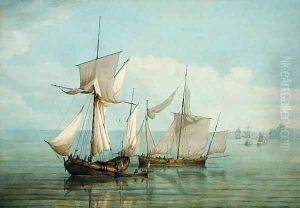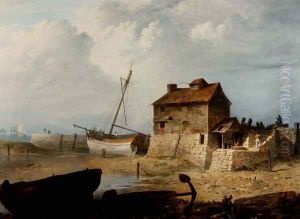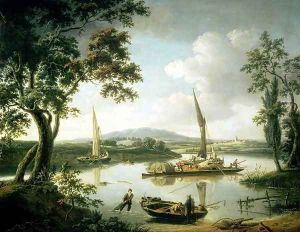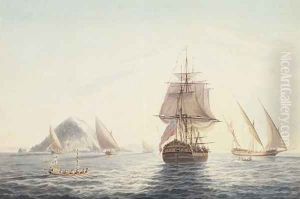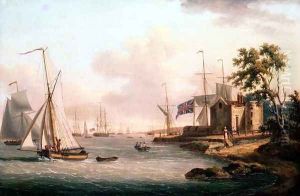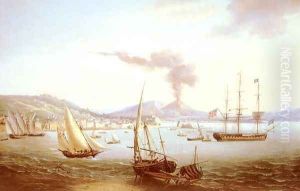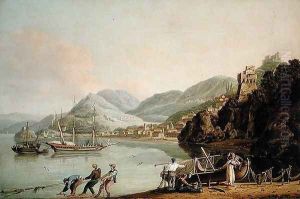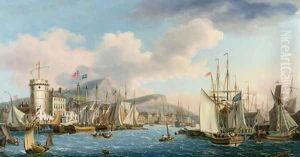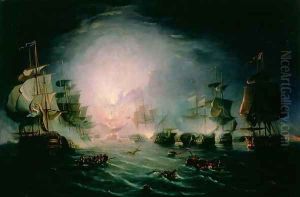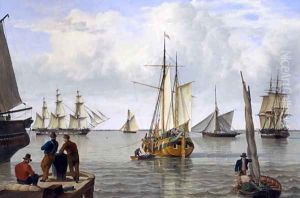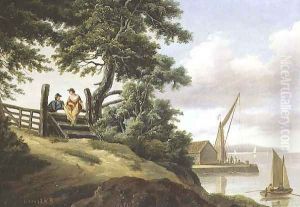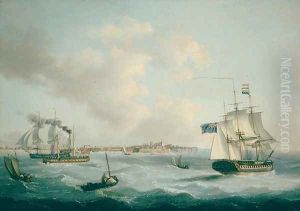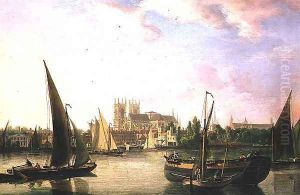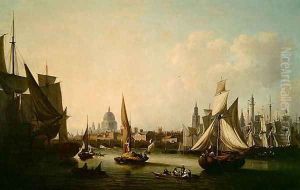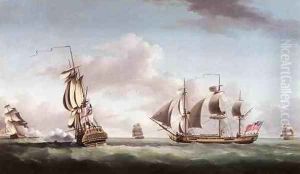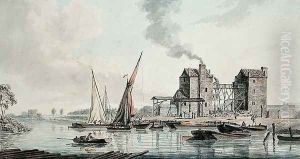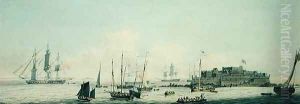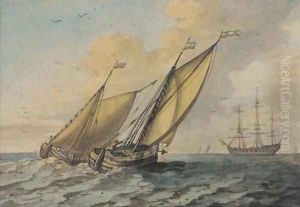John Thomas Serres Paintings
John Thomas Serres was an accomplished British painter who lived during the late 18th and early 19th centuries. Born into an artistic family on December 4, 1759, in London, England, his father, Dominic Serres, was a renowned marine painter, which greatly influenced John's future career path. John Thomas Serres inherited his father's talent and developed a strong interest in painting from a young age, focusing primarily on marine subjects.
John Serres began his formal education in art at the Royal Academy Schools, where he studied under the tutelage of landscape painter Paul Sandby. His early works quickly demonstrated his skill in capturing the movement and vitality of the sea, and he exhibited his first piece at the Royal Academy in 1776. Throughout his career, Serres continued to exhibit regularly at the Academy, contributing over 100 works during his lifetime.
In 1793, Serres was appointed Marine Painter to King George III, a prestigious position that cemented his status as a leading marine artist of his time. He also succeeded his father as the master of drawing at the Royal Naval College in Chelsea, further solidifying his association with maritime themes.
Serres' work was characterized by dramatic seascapes, often depicting naval battles and ships in distress amidst stormy seas. He was also known for his topographical views and occasional landscape paintings. His style combined meticulous detail with a dynamic and romantic portrayal of the natural elements, which was highly appreciated by patrons and the public alike.
Despite his professional successes, Serres faced financial difficulties later in life, exacerbated by his involvement in a fraudulent scheme related to imaginary islands in the Pacific, promoted by his wife, Olivia Serres. This scandal, along with other debts, led to his imprisonment for debt in the Fleet Prison in 1823.
John Thomas Serres continued to paint during his incarceration, but his health and career sharply declined. He died in distress on December 28, 1825, leaving behind a legacy as one of the foremost marine painters of his generation. His works remain in various collections and are appreciated for their historical value and artistic merit.
